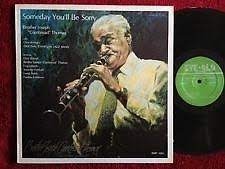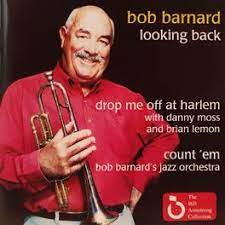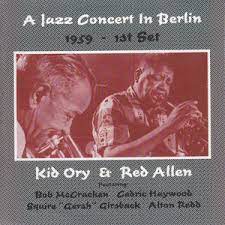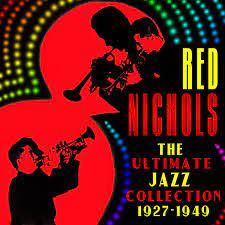
Daily Dose Of Jazz…
Joseph William Thomas was born on December 3, 1902 in New Orleans, Louisiana. His first professional gig was in his home city with trombone player Joe Harris in 1923. Soon after that, he worked with Jack Carey, Chris Kelly, and Kid Rena. He recorded with Charles Derbigny in 1941, but the recordings were not publicly released until the 1960s, by which time Thomas had become a figure in the Dixieland revival movement.
He led his own ensemble at New Orleans’s H&J Tavern for much of the 1940s, then in 1951, he became a sideman for Papa Celestin. He worked with this ensemble for years, including after Papa French and Eddie Pierson had taken over as leader.
Other associations in the 1950s and 1960s included work with Freddie Kohlman, Punch Miller, the Olympia Brass Band, and on Swedish television with Sweet Emma Barrett in 1968. In the 1970s he worked with the Legends of Jazz, replacing Joe Darensbourg.
Clarinetist and vocalist Joe Thomas, also known as Brother Cornbread and was closely associated with the New Orleans jazz scene, February 18, 1981 in New Orleans at 78.

Daily Dose Of Jazz…
Bobby Donaldson was born Robert Stanley Donaldson on November 29, 1922 in Boston, Massachusetts. Early in his career he played with the Boston Symphony. After playing locally in the early 1940s, he played with Russell Procope while serving in the Army in New York City.
In 1946–47 Bobby worked with Cat Anderson. Following this stint he played with Edmond Hall, Andy Kirk, Lucky Millinder, Buck Clayton, Red Norvo, and Sy Oliver/Louis Armstrong.
A prolific session musician for much of the 1950s and 1960s, he played with Helen Merrill, Ruby Braff, Mel Powell, Benny Goodman, Count Basie, Bobby Jaspar, Herbie Mann, André Hodeir, Kenny Burrell, Lonnie Johnson, Frank Wess, Willis Jackson, and Johnny Hodges.
Drummer Bobby Donaldson, who played both in the jazz, Dixieland and R&B idioms, transitioned in 1971.
More Posts: bandleader,drums,history,instrumental,jazz,music

Daily Dose Of Jazz…
Robert Graeme Barnard was born on November 24, 1933 in Melbourne, Australia and his parents had formed a dance band in the 1920s, his mother was the bandleader and pianist, his father on saxophone, drums and banjo. His older brother Len joined them on drums at age 11. He took trumpet lessons from age 11 and played clarinet in a local brass band before he joined the family band at 14 in 1947.
When his brother Len formed his own group, Len’s South City Stompers the next year he joined on trumpet and they made their first recording in 1949 on his 16th birthday. The following year they began a weekly radio broadcast as Len Barnard’s Dixieland Jazz Band. He played with the group until 1955 after being cheated of their takings and stranded in Tumut, Australia. Relocating to Sydney he performed with Ray Price Trio before returning to Melbourne.
In 1958 Barnard joined the Graeme Bell band for an Australian tour. He worked for Brashs from 1958 to 1962, while performing after business hours. He went back to Sydney in 1962 and as a member of Graeme Bell and His All-Stars appeared on Trad Pad, a TV special program.
He was nominated in 1996 at the ARIA Music Awards of 1996 for Best Jazz Album for Live at the Sydney Opera House, which was recorded with the Australian Jazz Allstars.
Trumpeter and cornetist Bob Barnard, who was made a Member of the Order of Australia (AM) for service to music, particularly jazz, transitioned on May 7, 2022.
More Posts: bandleader,cornet,history,instrumental,jazz,music,trumpet

Daily Dose Of Jazz…
Robert Edward McCracken was born on November 23, 1904 in Dallas, Texas. Early in his career he played with local Dallas musicians like Jack Teagarden, Eddie Whitley, the Southern Trumpeters, and Doc Ross’s Jazz Bandits.
From 1926 to 1928 he lived in New York City where McCracken worked with Johnnie Johnston and Willard Robison’s Levee Loungers. After returning to Dallas, he worked with Ligon Smith, Joe Gill, and Ross again. He went on to tour with Joe Venuti and Frankie Trumbauer, before moving to Chicago, Illinois in 1939.
While in Chicago he played with Bud Freeman, and in the Forties he worked with Jimmy McPartland, Wingy Manone, Benny Goodman, Russ Morgan, and Wayne King. He substituted for Barney Bigard in the Louis Armstrong All-Stars international tour in 1952–53. Bob then toured internationally with Kid Ory and Red Allen throughout the 1950s.
During his later years in Los Angeles, California he played in several Dixieland revival groups, working with Ben Pollack, Pete Daily, Wild Bill Davison, and again with Teagarden, Ory, and Allen.
Clarinetist Bob McCracken, who is on many recordings including Kid Ory’s album, This Kid’s the Greatest, transitioned on July 4, 1972.
More Posts: clarinet,history,instrumental,jazz,music

Daily Dose Of Jazz…
Rolland Pierce “Rollie” Culver was born on October 29, 1908 in Fond du Lac, Wisconsin. His first entry into professional entertainment was as a tap dancer, but after 1930 he concentrated on drumming.
He played in the territory band of Heinie Beau for most of the 1930s, then, in 1941, began playing with Red Nichols. He drummed behind Nichols for more than twenty years, working with him right up to Nichols’s death in 1965.
Other associations include work with Jack Delaney and Raymond Burke. He became a session musician for film soundtracks. Drummer Rollie Culver transitioned on December 8, 1984 in Culver City, California.
More Posts: drums,history,instrumental,jazz,music




